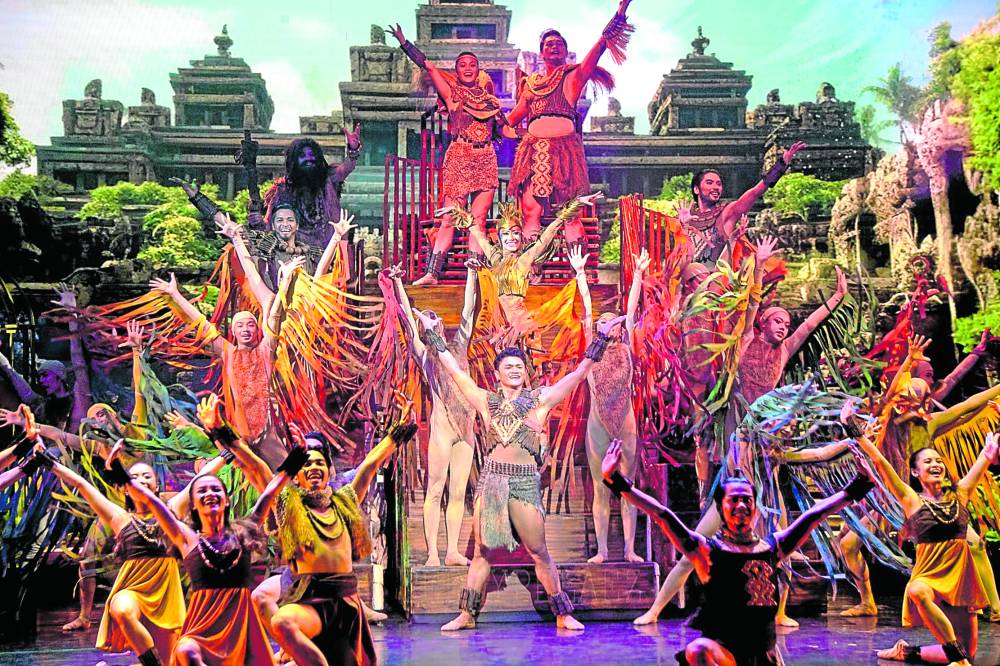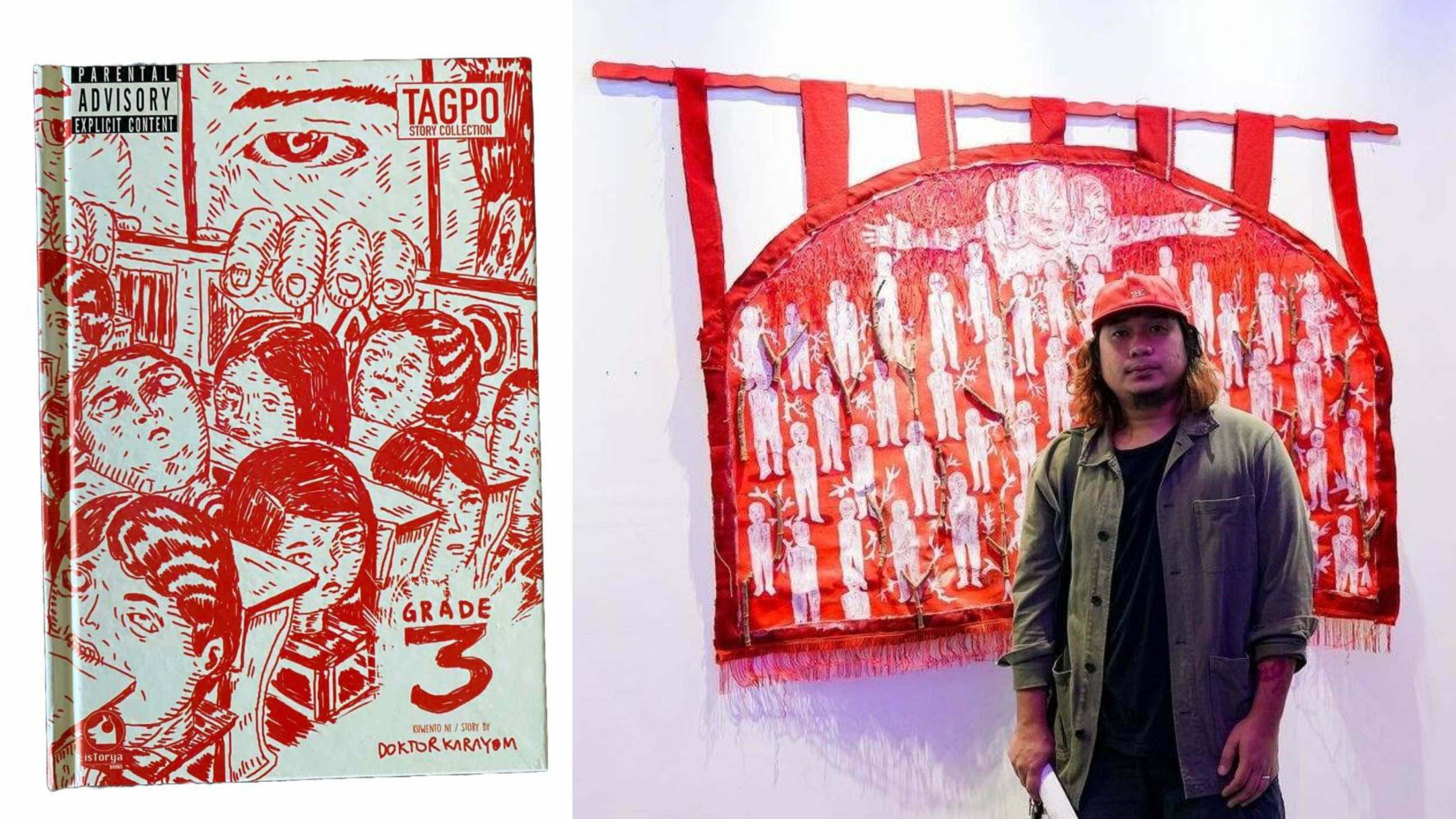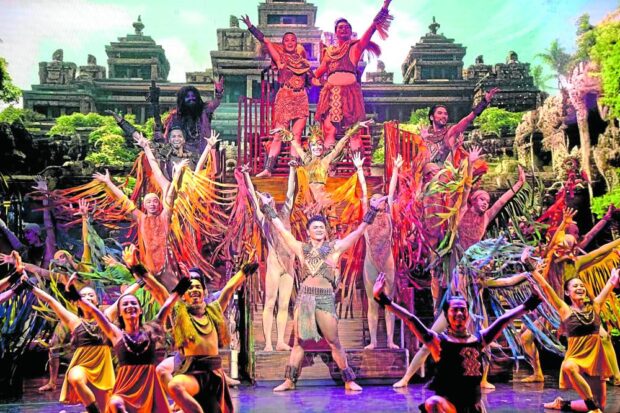
After the lockdowns, the main dance companies have made their art form more accessible and comprehensible to the public with story ballets. Audiences, particularly those unfamiliar with dance, can follow the story without getting bored. Characters, especially those in a local setting, are relatable. An easy-listening music score can influence the way the audience will experience the magic of theater. The bottom line: They all attracted sizeable crowds to fill up the theater and yell, “Woot!”
The recent narrative ballets of Philippine Ballet Theater (PBT), Ballet Philippines (BP) and Ballet Manila (BM) captured the audience, judging from gushy social media posts and inquiries on future playdates. The performances of these three companies were clear-cut and impassioned. Finally, there were sincere attempts to inject meaning or spirit beyond technical feats, although the results looked superficial at times.
Generally, these dancers, particularly the leads, could still up their ante. They need to flesh out their performances with spontaneous expression and fine detail that would make them more compelling to watch. Most were still at the stage of being in service of the movement or choreography instead of moving the audience with their humanity. Others were invariably restrained or played it too safe. It’s not entirely the dancers’ fault. Back in the day, acting coaches and theater directors helped the cast identify the motivations behind their movements. Dancers from the boomer and Gen X eras informed their work with acting intelligence.
In the shows performed in mid-2023, insufficient training in partnering was glaring onstage. The men looked like laborers carrying their partners like sacks of rice instead of letting them float like clouds of cotton candy. Then there were the clumsy hands, uncoordinated lifts, ballerinas who were either clueless about partnering or falling from supported turns.
You can’t expect absolute perfection from our dance companies, given the inadequacies in resources, elite training and lack of an onsite pianist to help cultivate their musicality. Yet, you can’t put down Pinoy dancers because their innate resilience enables them to rise to the occasion.
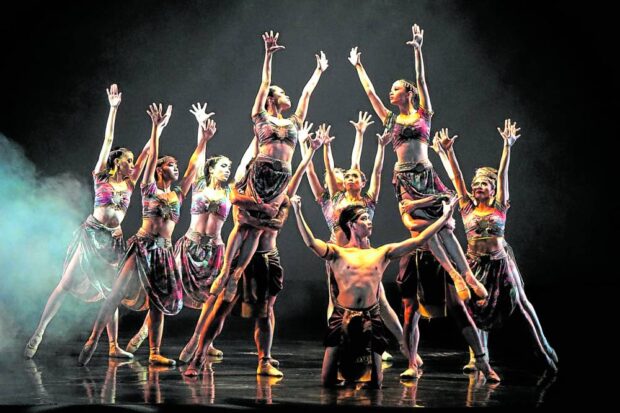
‘Ibalon’
PBT made a dramatic comeback with a premiere of “Ibalon,” a two-act ballet inspired by the Bicolano hero Handyong who frees Prinsesa Bulanon from a curse. Formulaic as the 19th-century ballets, it offered lots of spectacle dancing in the kingdom of Ibalon (the old name for Bicol), ballet and folk dance hybrids and artful pas deux—a trademark style of choreographer and artistic director Ronilo Jaynario.
After the COVID restraint, the dancers let their emotions all out in this production that left the audience enthralled. However, for lack of a ballet master to clean up their technique and train the greenhorn corps, errors were flagrant. Still, the forgiving theatergoers, who knew the standards of dancing, merely looked the other way.
Aside from PBT’s heartfelt performance, composer Paulo Zarate deserved kudos for the rousing, cinematic epic scoring—the ballet’s strongest element. Each character was defined by a different musical arrangement, and the atmospheric scoring brought the audience to a facsimile of the Marvel Cinematic Universe.
A practical choreographer, Jaynario sought to entertain. He is gifted in creating pieces that are likeable to the general audience. Some dances were strong stand-alone pieces such as the “Singkil” on pointe shoes that could be a potential hit in the company tours. Jessa Tangalin as the princess trapped in a snake’s body let out a fragile air following every motion of her body. Matthew Davo as Handyong, decorous as the hero, served as her dutiful partner.
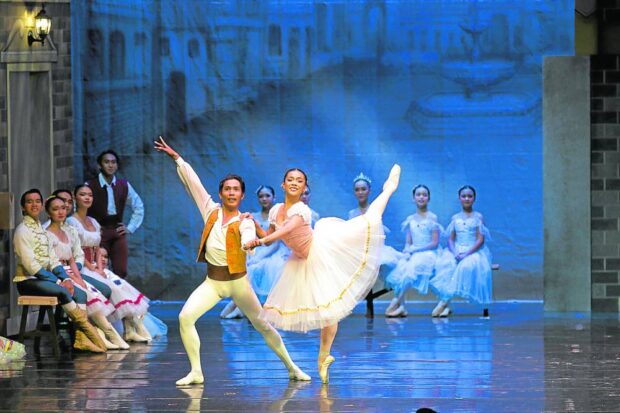
‘Coppelia’
Mikhail Martynyuk, BP’s artistic director, tweaked the original choreography of the classic “Coppelia,” the story of Swanilda and her fiancé Franz, who was besotted by a life-size doll of toymaker Dr. Coppelius. The audience was charmed by the detailed pantomimic actions, the comedic touches in the crowd scene and among Swanilda’s friends, and the energetic mazurkas and czardas.
Swanilda’s friends, all seasoned dancers, added polish to the show, but their scene in Dr. Coppelius’ workshop lacked the mischief of the original. Jemima Reyes as Swanilda was sturdy until the end, as she tirelessly executed whipped turns in different directions. Her immense stage presence swallowed up her Franz, Ian Ocampo. Though her dancing was pretty, the acting was overdone and needed comedic timing. Peter Lloyd San Juan as the scheming Dr. Coppelius brought the house down with his outlandishly camp antics.
The music for “Prayer” was used in the “Morning” dance instead. Instead of the core-wrenching adagio in the original version, the solo was more about emoting to the hilt. Martynyuk capitalized on the pliant back and rippling arms of Clarisa Miranda. What marred the illusion, though, were her back-up dancers—students from the company school with droopy elbows.
Soloist Nicole Barroso’s quiet presence and exquisitely articulated movements made her stand out in “Pas de Six.”
There was a fly in the ointment: It may seem well-intentioned to cast an ill-equipped dancer in a role that challenged one’s capabilities and boosted morale. But the result can be uncomfortable to watch.
‘Ibong Adarna’
BM’s associate artistic director and choreographer Gerardo Francisco took “Ibong Adarna” to greater heights. It’s the tale of three princes searching for the mythical bird whose singing would cure their father. The story was cleverly explained in tula (classic Pilipino poetry) that was flashed on the LED screen. When “Ibong Adarna” premiered in 2017, it made an impact for its boundless spectacle of power and energy, particularly from the well-drilled corps.
The postpandemic production revealed the maturity of Francisco, who showed more sensitivity to the narrative than the spectacle. He focused on details such as seamless passages and lucid mime, often repeated to emphasize a point and imbue different motivations for the dances. The multiple repetitions of heavy gestures and weighted steps were not just executed for effect, but to drive the sense of urgency in moving the action forward.
Composer Diwa de Leon’s thumping score with occasional lyrical passages served as the heartbeat of the show. Lighting by designer Jay Aranda played a more subtle role so as not to compete with the strong dance and visual elements.
A bulked-up Joshua Enciso played Don Juan, who captured the Ibong Adarna portrayed by Abigail Oliveiro. Her soft airy jumps, clean lines and rippling arms made her a visual delight. Enciso, together with Mark Sumaylo and Romeo Peralta as Don Juan’s scheming brothers, attacked their muscle-bound capering with utmost commitment. A natural character actor, John Balagot could be a dead ringer for a real monkey.
—Contributed

